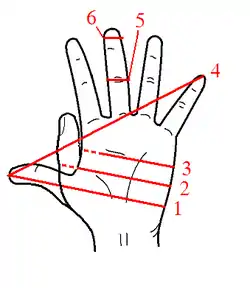Anthropic units
The term anthropic unit (from Greek anthropos meaning human) is used with different meanings in archaeology, in measurement and in social studies.

In archaeology
In archaeology anthropic units are strata or deposits of material containing a high proportion of man-made detritus. For example:[1]
"… 'degraded anthropic units', i.e., deposits produced by weathering and decay of fired bricks and mixed fill with non-selected inclusions …"
— Massimo Vidale (1990)
In measurement
Following the coinage of the term "anthropic principle" by Brandon Carter in 1973–4,[2] units of measurement that are on a human scale are occasionally referred to as "anthropic units", as for example here:[3]
"… the metre and kilogram occupy a reasonably central position as far as symmetry in positive and negative powers of ten is concerned, emphasising that the SI units are natural anthropic units …"
— Brian William Petley (1985)
In social studies
In fields of study such as sociology and ethnography, anthropic units are identifiable groupings of people. For example:[4]
"Ethnographers have been accustomed to deal with the 'race', the 'tribe' and the 'nation' as social or anthropic units …"
— J. J. Thomson (1896)
and:[5]
"... among the more primitive anthropic units it seems a grave ineptitude for the Chukchees not to adopt the snowhouse building complex from the neighboring Eskimos"
— Jacob Robert Kantor (1944)
See also
References
- Massimo Vidale (1990). Study of the Moneer South East Area A Complex Industrial Site of Moenjodaro. East and West. Istituto Italiano per l'Africa e l'Oriente (IsIAO). 40(1/4): 301-314. (subscription required)
- Brandon Carter (1974). Large number coincidences and the anthropic principle in cosmology. Confrontation of cosmological theories with observational data; Proceedings of the Symposium, Krakow, Poland, September 10–12, 1973. Dordrecht: D. Reidel Publishing. pp. 291-298.
- Brian William Petley (1985). The fundamental physical constants and the frontier of measurement. Bristol; Boston: A. Hilger. p. 120.
- J. J. Thomson (1896). Address by the President to the Mathematical and Physical Section. Science. American Association for the Advancement of Science. New Series, 4(90): 392-402. (subscription required)
- Jacob Robert Kantor (1944 [1929]). An outline of social psychology. Ann Arbor, Michigan: Edwards Brothers. p. 120. Accessed June 2013.